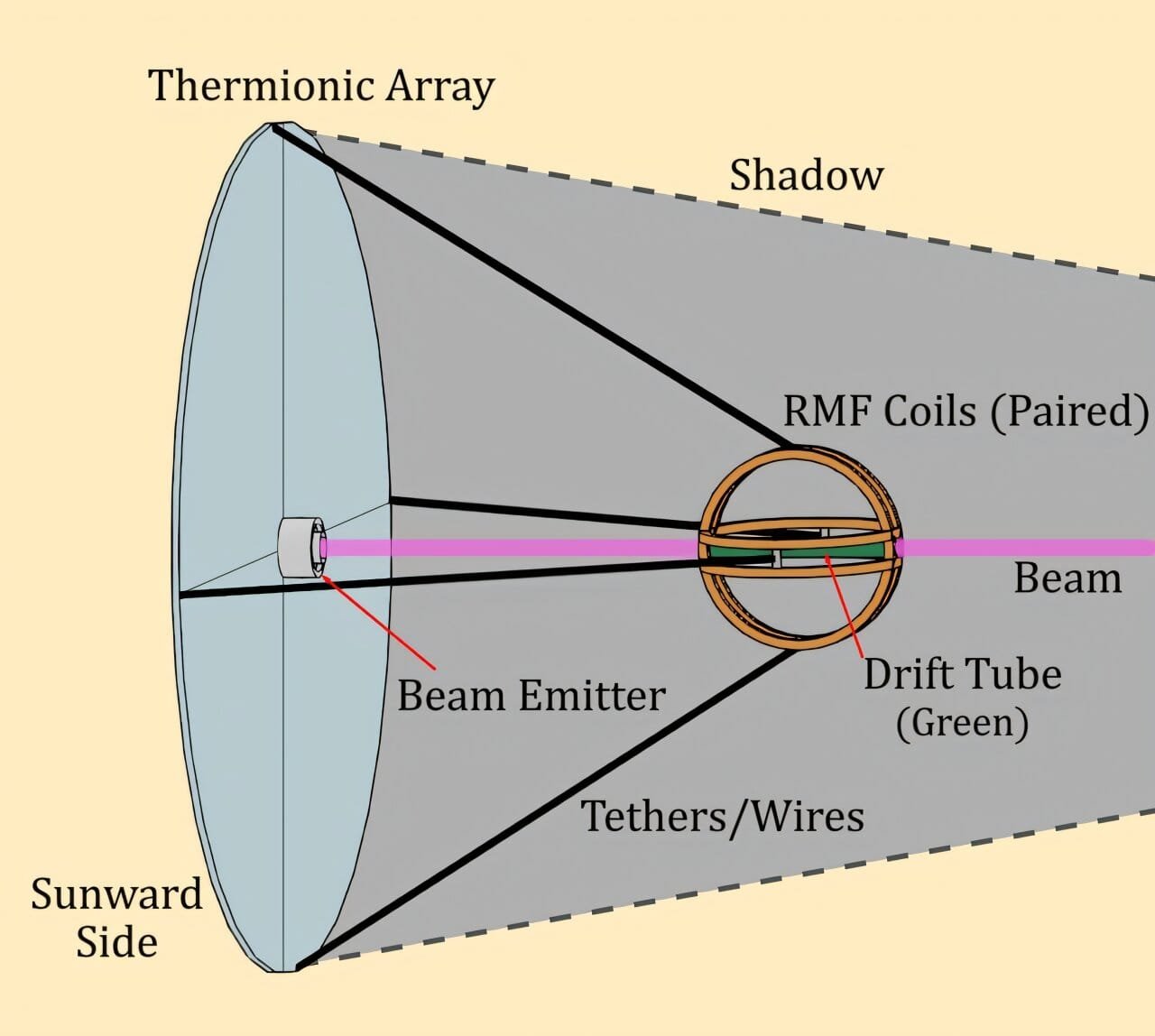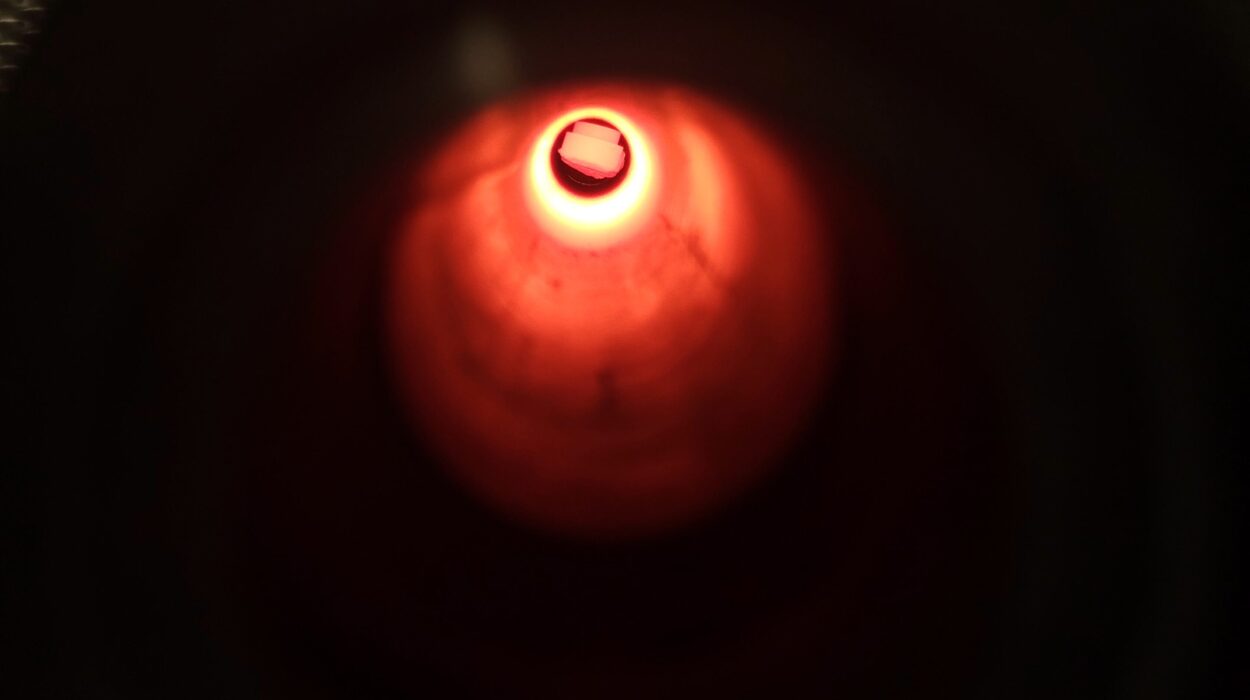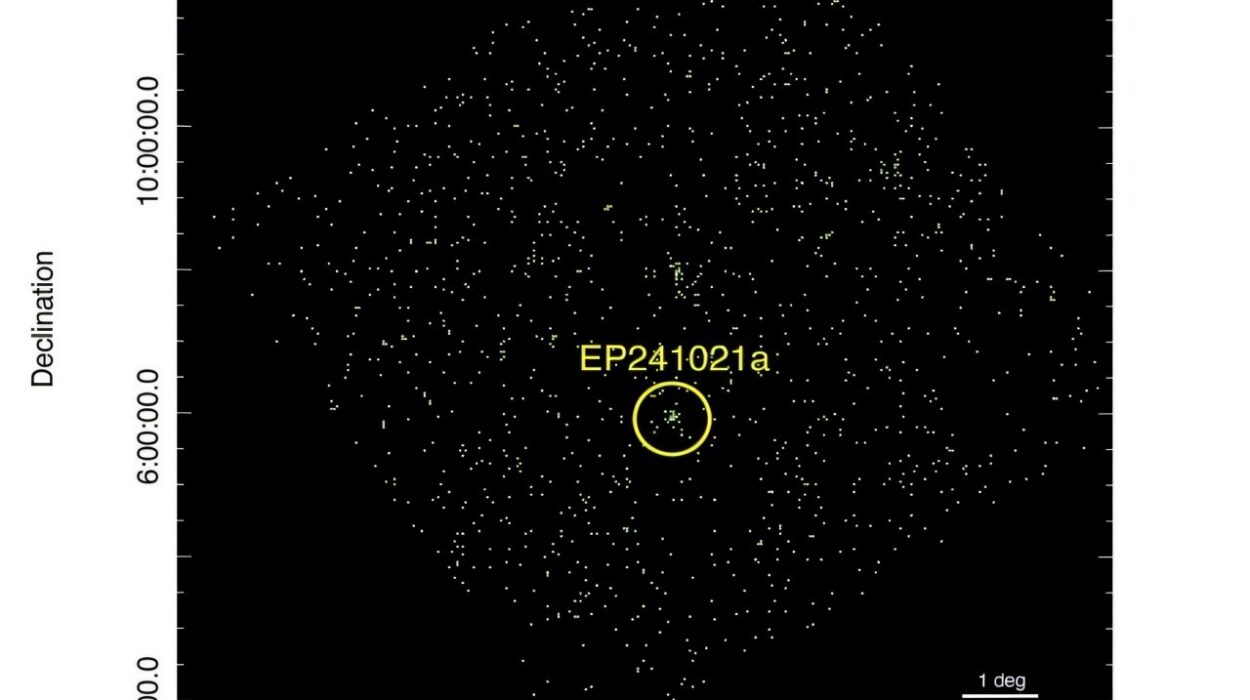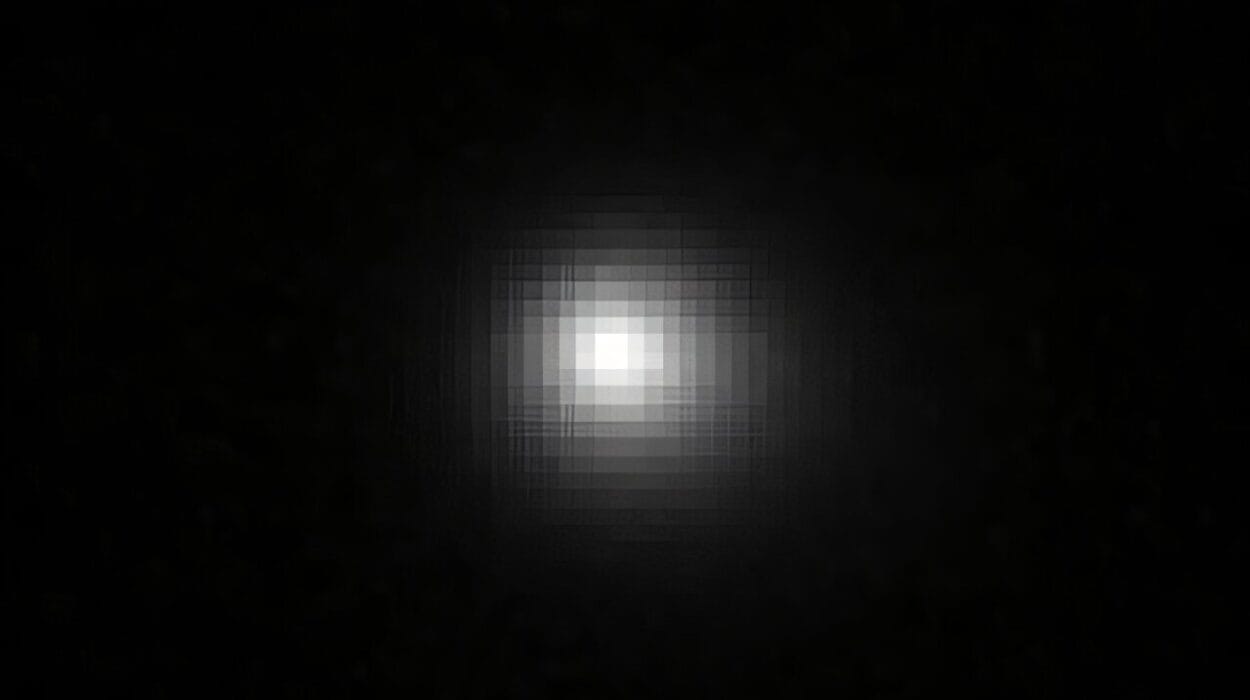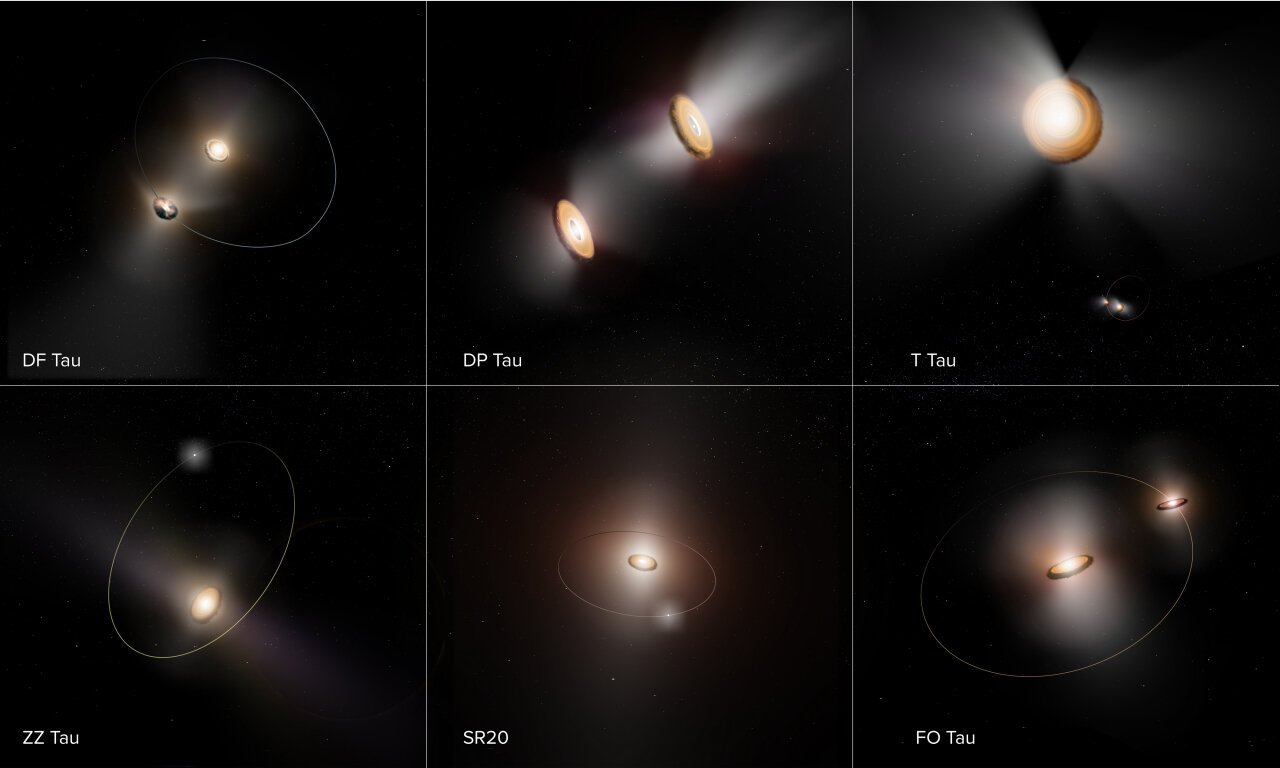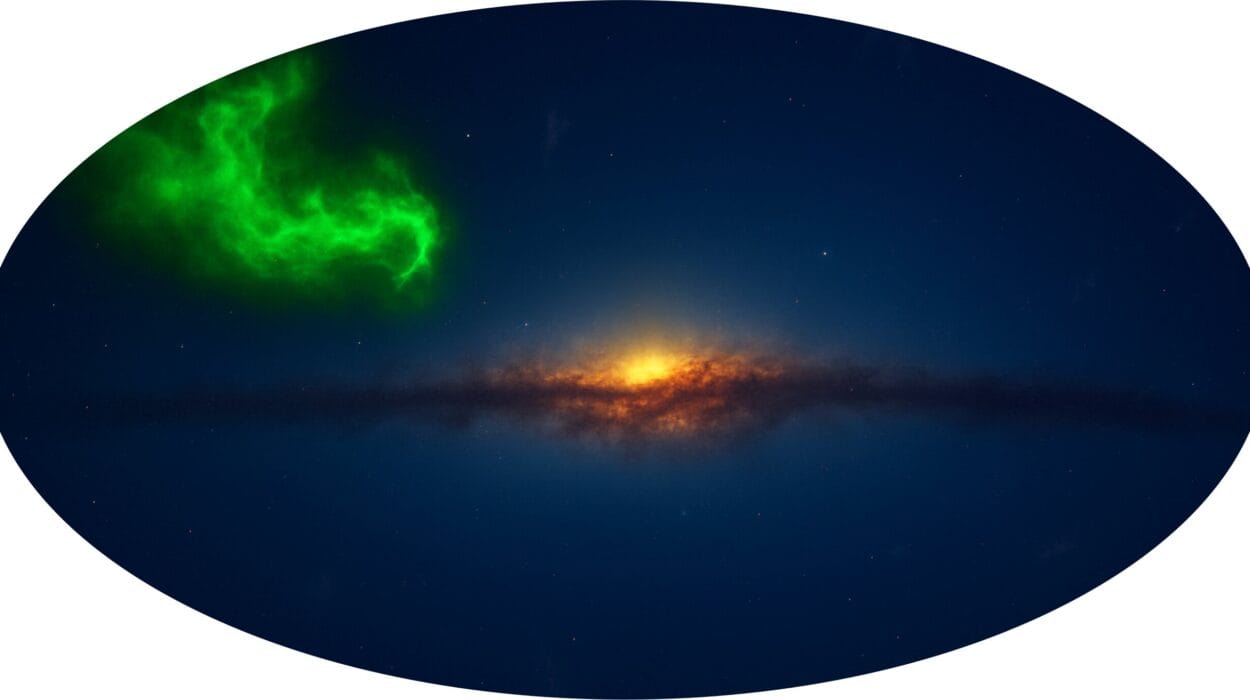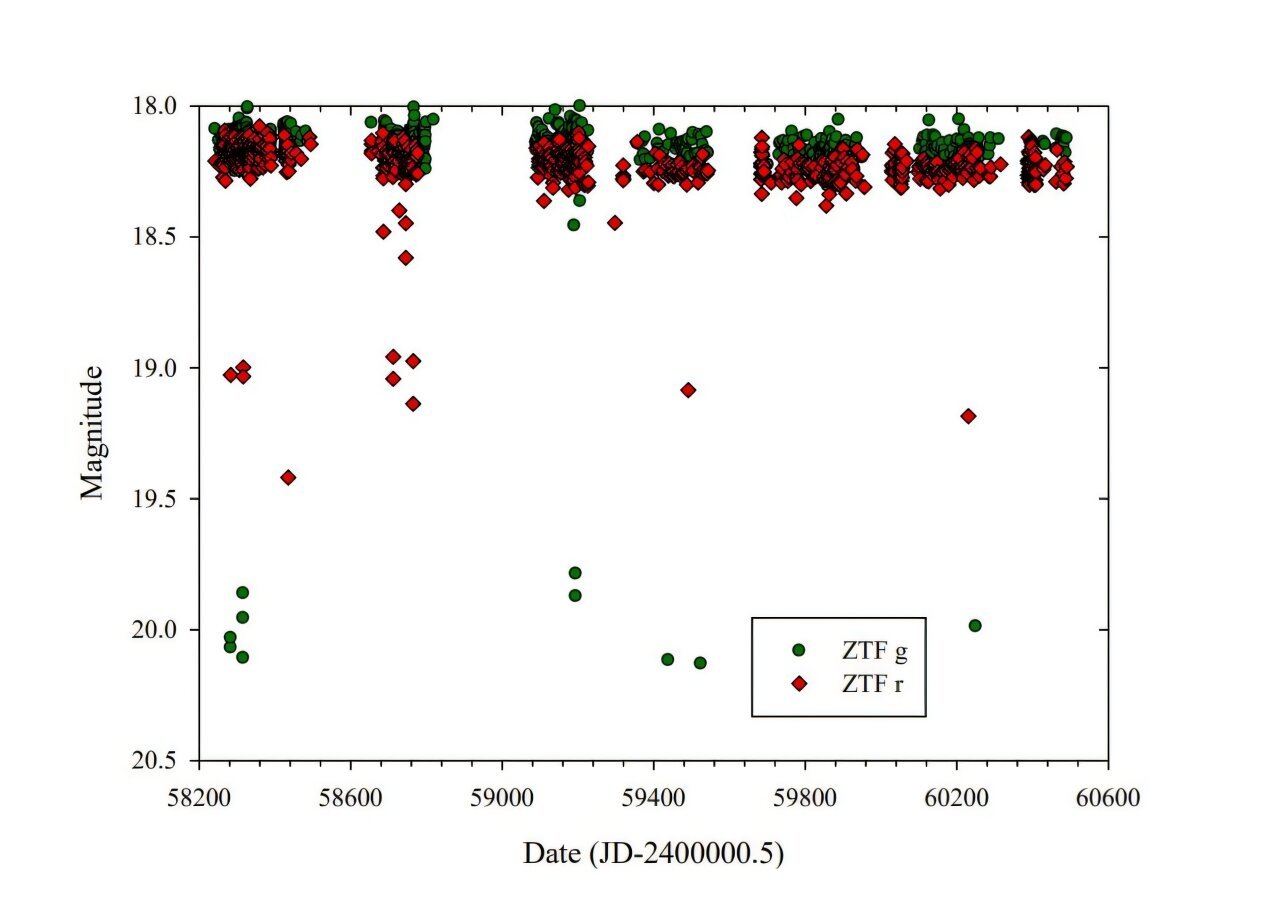Getting a spacecraft to another star is one of the most significant challenges humanity faces. Interstellar travel is not only limited by vast distances but also by the immense technological, physical, and logistical hurdles involved. However, such obstacles have not deterred people from working toward this ambitious goal. Among the most notable efforts are those of Breakthrough Starshot and the Tau Zero Foundation, two organizations focused on achieving interstellar travel using innovative propulsion systems powered by beamed energy.
A recent study published in Acta Astronautica sheds new light on the physics of one such propulsion mechanism. Authored by Jeffrey Greason, Chairman of the Tau Zero Foundation’s board, and Gerrit Bruhaug, a physicist specializing in laser systems at Los Alamos National Laboratory, the paper explores the concept of a relativistic electron beam and its potential as a means to propel a spacecraft to another star system.
One of the central considerations in interstellar mission design is spacecraft mass. Heavier spacecraft are more challenging to accelerate to the high velocities needed for interstellar travel due to the proportional increase in energy and power requirements. Breakthrough Starshot envisions using ultra-lightweight probes—essentially small chips equipped with sensors—attached to enormous light sails. These sails would catch energy from a powerful laser beam and use that momentum to achieve velocities sufficient for a voyage to Alpha Centauri. However, such tiny probes would have limited payload capacity, reducing their ability to perform detailed scientific investigations once they reached their destination. This mission design is primarily a proof of concept for interstellar propulsion rather than a full-fledged exploratory mission.
The Tau Zero paper takes a different approach, considering larger probes weighing up to 1,000 kilograms, comparable to the Voyager spacecraft of the late 20th century. With modern technology, such a payload could house much more advanced sensors and instrumentation than was possible in the 1970s, making it a far more capable and scientifically valuable mission. However, accelerating a 1,000-kilogram spacecraft to interstellar speeds presents immense challenges, especially when relying on beamed-power propulsion. This raises the critical question: what type of energy beam could accomplish this feat?
Breakthrough Starshot’s design centers on a visible-light laser beam that exerts pressure on the spacecraft’s light sails. However, this method has significant limitations. Lasers in the visible spectrum would be effective only for very short distances—on the order of 0.1 astronomical units (AU)—due to the rapid dispersal of the beam. This small distance is negligible compared to the 277,000 AU separating the Sun and Alpha Centauri. While the brief burst of energy might accelerate a tiny probe to impressive speeds, it would not be viable for pushing larger spacecraft.
The Tau Zero proposal suggests a different beamed-power propulsion system that operates over a much longer range and generates enough force to accelerate heavier spacecraft. Instead of using light, the concept leverages relativistic electron beams, streams of electrons accelerated to nearly the speed of light. Such beams could theoretically remain coherent and deliver energy to a spacecraft across vast distances, far exceeding the capabilities of optical laser systems.
Electron beams at relativistic speeds present distinct advantages. Electrons are relatively simple to accelerate to high velocities using electromagnetic fields, requiring less energy than many other particles. Additionally, relativistic beams benefit from a phenomenon called relativistic pinch, which stabilizes the beam’s structure. At such extreme speeds, time dilation reduces the relative effect of the electrons’ mutual repulsion (caused by their negative charge). As a result, the beam can stay focused over longer distances without scattering significantly.
The calculations in Greason and Bruhaug’s study suggest that a relativistic electron beam could continue to accelerate a spacecraft as far as 100 AU or more. By this point, the spacecraft could be traveling at approximately 10% of the speed of light (30,000 kilometers per second). At such a velocity, the journey to Alpha Centauri would take just over 40 years—within a human lifetime and far shorter than the tens of thousands of years a conventionally propelled spacecraft would require.
However, creating such a beam and ensuring its effectiveness over long distances present substantial challenges. One primary concern is the power source. Generating a beam powerful enough to push a spacecraft at relativistic speeds requires enormous energy—estimates suggest up to 19 gigaelectron volts for operation at 100 AU. While daunting, this is within reach of existing technology; modern particle accelerators like the Large Hadron Collider produce beams with far greater energy. The real difficulty lies in adapting such technology for a space-based system capable of continuous operation.
Capturing this beam and directing it to the spacecraft also demands innovative infrastructure. The study proposes the construction of a solar statite, an orbital platform situated extremely close to the Sun’s surface. The statite would use both light pressure and the Sun’s magnetic field to counteract gravitational pull, maintaining its position above the Sun. Equipped with a massive sunshield to protect its electronics from extreme heat and radiation, the statite would act as the generator and transmitter for the relativistic electron beam.
The choice of a statite over an orbiting platform is strategic. Unlike orbital systems, which eventually fall out of alignment due to planetary motions or the spacecraft’s trajectory, a statite remains stationary relative to its target. This ensures that the beam remains accurately aimed at the spacecraft throughout the acceleration phase, even over the extended periods required to impart significant velocity.
Despite the progress in understanding the theoretical foundations of relativistic beam propulsion, practical implementation is still a long way off. Building and maintaining a statite near the Sun presents enormous engineering challenges, including the development of heat-resistant materials and highly efficient energy-conversion systems. Advances in miniaturization and autonomous systems would also be necessary to create probes capable of long-duration interstellar missions with minimal human intervention.
This concept underscores a broader reality in interstellar exploration: most ideas remain in the realm of theoretical physics and speculative engineering. Yet, even speculative ideas are crucial. They provide a framework for thinking about the challenges and solutions that future generations might tackle. What seems like science fiction today could serve as the foundation for tomorrow’s scientific breakthroughs.
The significance of these studies extends beyond propulsion methods. They also serve to engage the scientific community, encourage international collaboration, and inspire the public about the possibilities of humanity’s place in the universe. Both Breakthrough Starshot and Tau Zero began as platforms for discussing what might be possible, bringing together scientists, engineers, and enthusiasts from around the world to contribute their expertise and creativity.
Relativistic beamed propulsion concepts, like the one explored in this study, suggest that interstellar exploration within a human lifetime is not an insurmountable dream. By pushing the boundaries of physics and engineering, humanity may one day bridge the vast gulfs between stars, opening up an entirely new era in space exploration. While the road to such achievements is fraught with technical and logistical challenges, the work of visionaries in organizations like Tau Zero and Breakthrough Starshot lays the foundation for humanity’s eventual journey to the stars. Through persistent effort, innovation, and collaboration, the stars may one day become more than distant lights in the sky—they may become destinations.
Reference: Jeffrey K. Greason et al, Sunbeam: Near-sun statites as beam platforms for beam-driven rockets, Acta Astronautica (2024). DOI: 10.1016/j.actaastro.2024.07.015
